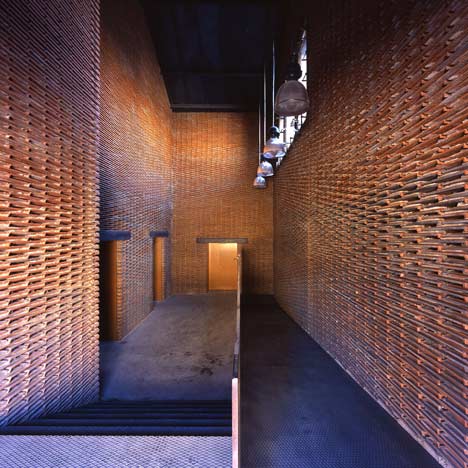
Warehouse 8B by Arturo Franco Office for Architecture
Stacks of reclaimed roof tiles form walls inside this former slaughterhouse in Madrid by Spanish architect Arturo Franco.
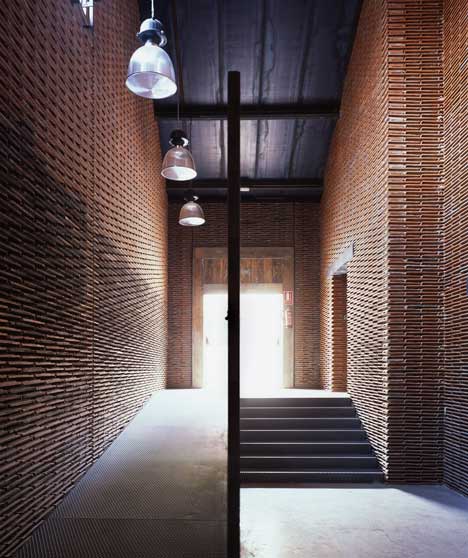
Refurbished in 2009 for administrative use, Warehouse 8B contains an office, a stockroom and an event space.
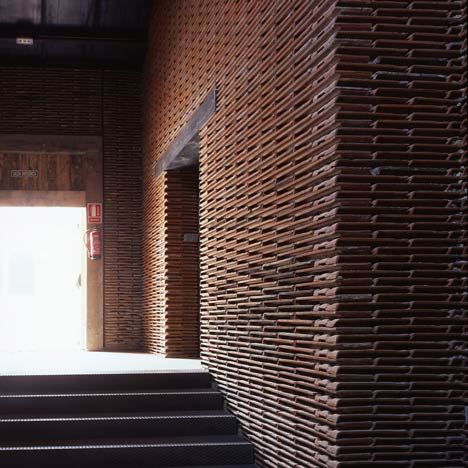
The recycled clay tiles were reclaimed from the warehouse roof when it was replaced.
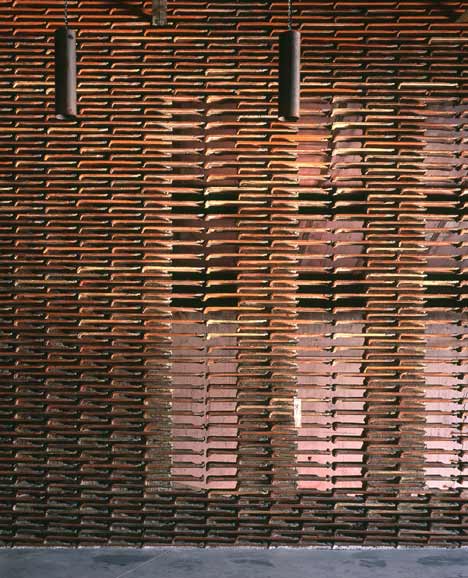
Lines of missing tiles create narrow apertures in the partition walls.
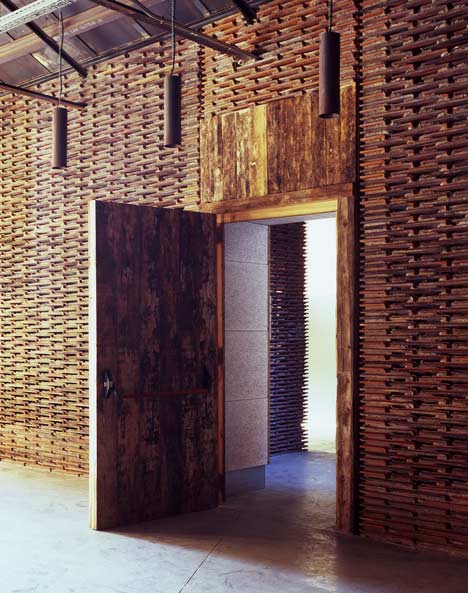
More projects in Spain on Dezeen »
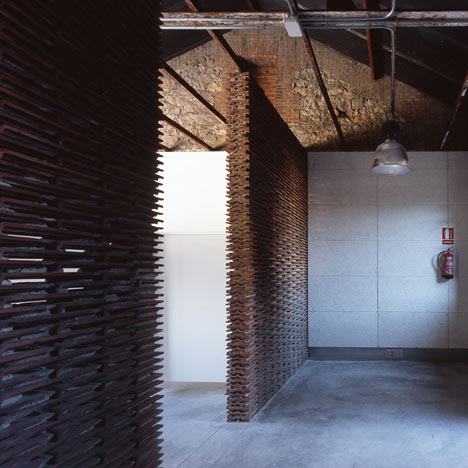
Photography is by Carlos Fernandez Piñar.
The following information was provided by the architects:
In a small warehouse of the old slaughterhouse of Madrid, warehouse 8B, the tiles in bad condition have been removed from the roof, been stacked and been put inside to solve a problem. This could be the summary of the intervention.
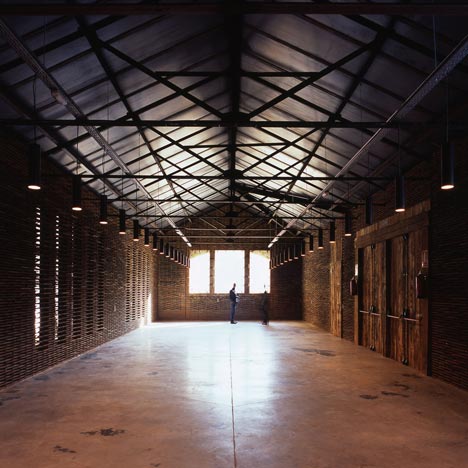
The slaughterhouse of Madrid was projected around 1907 and built during the second decade of the 20th century by Luis Bellido, municipal architect. For almost sixty years it served as a great pantry for the centre area. During this time it demonstrated its functional virtues and its special characteristics only too well. With the passing of time, the style applied to its façades, has become a more questionable matter, as it is far from the first approximations to the Modern Movement that was already being explored in this sort of industrial building in Germany, Holland or France. During the eighties, the slaughterhouse was moved to the outskirts of the city. The small “industrial city” projected by Bellido fell into neglect and oblivion. For the past few years, the town council of Madrid has been trying to convert this deteriorated complex into an avant-garde cultural engine for the city.
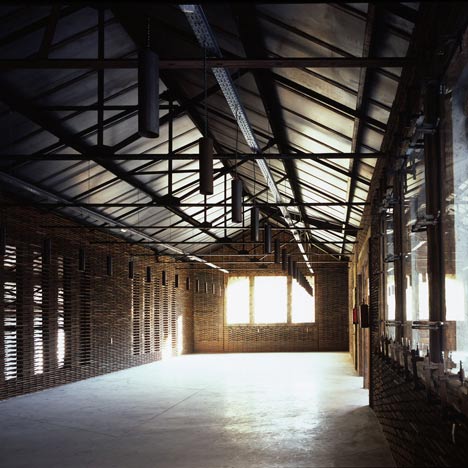
Warehouse 8B will be the space destined for administrative management. It will be composed of a small working area, a stockroom and a multi-purpose space for talks or presentations. Originally they were back-up rooms for the storage of waste produced in warehouse no.8, where skins and salted meat were dried. A minor warehouse but of great spatial interest.
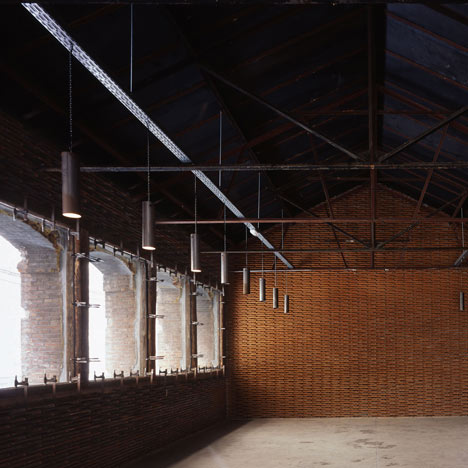
The priority of the intervention was to replace a roof of flat shingle tiles over boards and successively patched thin, hollow bricks, to carry out a structural reinforcement of the whole set, and to fit out the indoors, thermally and acoustically, so as to provide service to the new uses. This process had been followed before in some other warehouses of the slaughterhouse and, as a result, mountains of tile, timber, cladding and granite slab rubble piled up waiting to be taken to the dump.
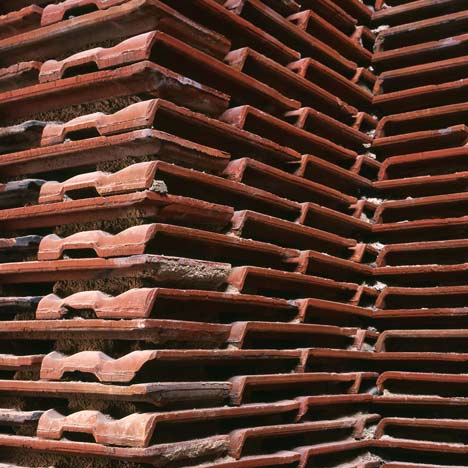
I prefer to think that this project emerged from opportunity, from discovering an opportunity in that rubble. In the path of exploring all the reasonable possibilities, the construction system turns into a project generator, in the place where a certain ethic view on rehabilitation rests, before architecture.
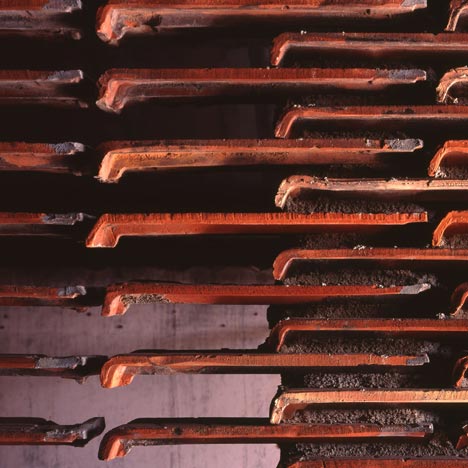
How does that found object work? How does the flat shingle tile work? How is it stacked? How is it bonded? What are its organoleptic characteristics, its weight? How do they join? These are some of the questions that arise during the process. The absence of some bonding elements produce lattices, the passing of light. Sometimes a whole piece for the walls, others, half a piece for the claddings. The problem of the corners, the lintels. The universal problems that architecture faces arise. At the same time and with the same intensity the workforce and imperfection appear. The imperfection of man and the old, the recovered. I recall a naïve order given on the building site: “Twist yourself José, it doesn’t matter” and an answer, a lecture from the site manager: “I won’t twist! There will always be time for that!” A job of many, full of vibrations. The vibrations of the collective craftsmen, the craftsman that Richard Sennett claims.
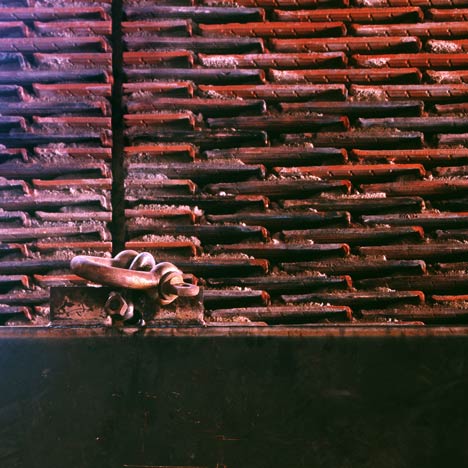
Like that cottage in the woods by the Swedish architect Ralph Erskine, where he piled trunks to protect himself from the harshness of winter, this project is also bioclimatic. It is bioclimatic because the tile contributes to the thermal and acoustic comfort and it’s sustainable because it reinvents itself with what it has within range. It is bioclimatic like architecture of a small country village, like those hearth-chimneys lined with clay that can be found in the province of Soria.
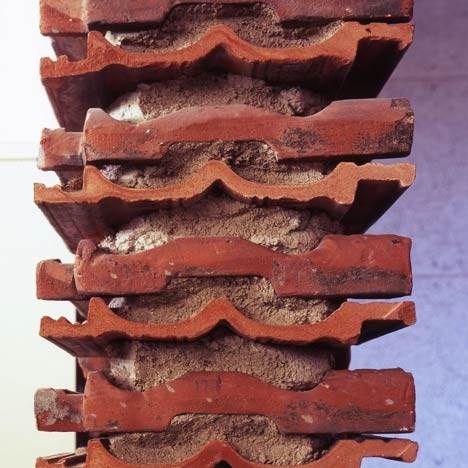
It’s an intervention that intends to respect a valid spatial configuration, without adulterating it. It is proof of the power of architecture as a qualified container, independent from its uses, of the circumstantial uses. It’s a classic concept, everlasting in space, which has nothing to do with classicism, nor necessarily with Italy. Against the intended traditional “national” style that Luis Bellido applied to façades, in this case, on the inside, the style is diluted, it ceases to be heir of the old Madrid School. Order, opportunity, engagement, contention or clarity without any previous formal will. An unknown field to me, beyond the project, beyond any intention. The architect’s prominence takes a step back, it abandons architecture in time. History is pendular and helical, if we assume it has three dimensions.
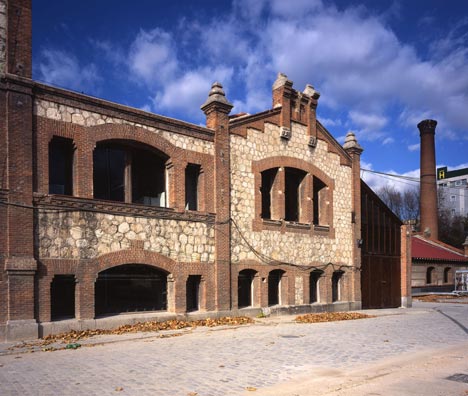
This project undoes some paths already travelled, it intends to reach meeting points. It advances by retreating, like rowers, that are looking backwards, like Oteiza explained. From the Spanish tile, which was designed using a woman’s thigh as a mould, and from its manual laying, take over came about by industrialized application and its flat (tile) version. Now, the industrialized elements, lifeless, are understood in another way, de-contextualized and laid from the predictability of manual labour. This project tries to understand architecture as an intellectual, cultural and ethical experience. Not to be mistaken with a social or political stance.
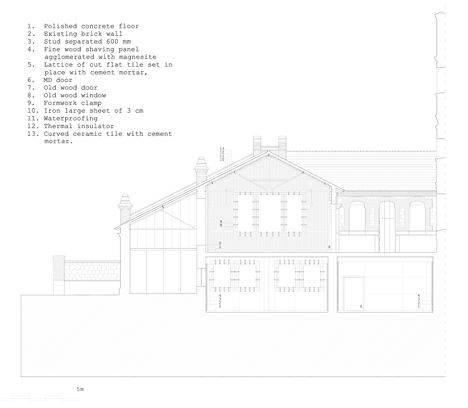
Click above for larger image
Location: C/ PASEO DE LA CHOPERA, 14. NAVE 8B. ANTIGUO MATADERO LEGAZPI. 28045 MADRID.
Preparation of the project and completion of construction schedule: January 2009-December 2009.
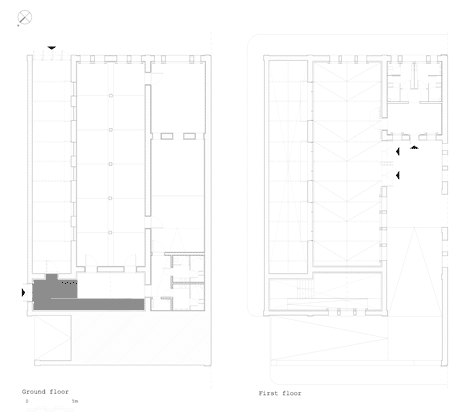
Click above for larger image
Project’s authorship: Arturo Franco. (architect)
Project’s collaborators: Diego Castellanos. (interior architect), Yolanda Ferrero. (architect)
Site Supervisor and Quantity Surveyor: Jose H. Largo Díaz. DITE SL.
Developer/Owner: Arts Council of Madrid City Council
Construction Company: PECSA.s.a.
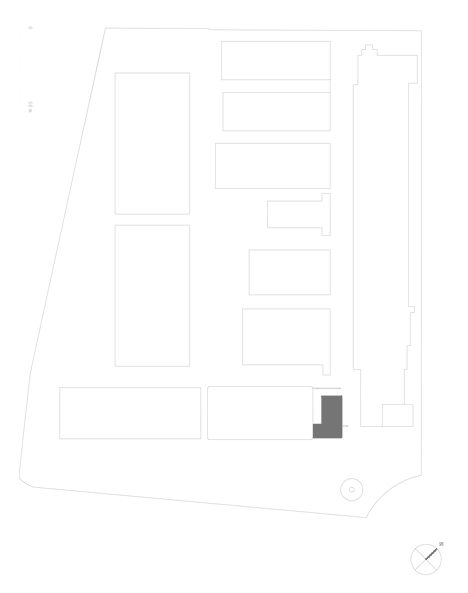
Click above for larger image
Period for completion: 8 months
Work budget: 500.000 €.
Intervention area: 1.000 sq m